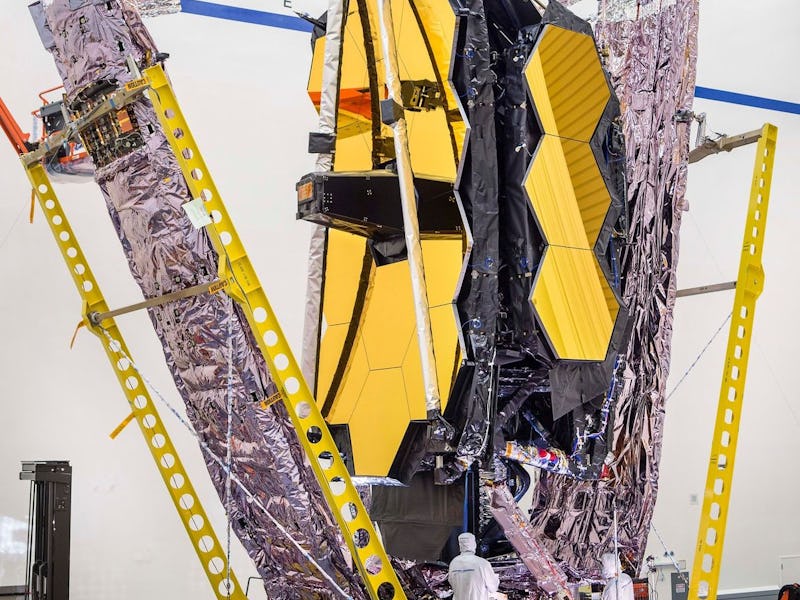NASA's James Webb Telescope just cleared a major hurdle before launch
The telescope proved that it can receive commands once in space.

When spacecraft venture out into the cosmos, communication is key. Space missions depend on excellent communication between ground control and other satellites, telescopes and probes for their survival.
Now, NASA's James Webb Telescope has proven that it is up for the task, too. This week, NASA announced that the telescope passed its Ground Segment Test, showing that it can receive commands after it launches into space.
The Ground Segment Test ensures that communication with the telescope will run smooth. It marks the first time that commands to power on and test Webb’s scientific instruments have been sent to the telescope from its Mission Operations Center at the Space Telescope Science Institute (STScI) in Baltimore, Maryland, according to NASA.
The James Webb Telescope has been fully assembled, and ready to launch in the year 2021.
"We’ve performed pieces of this test as the observatory was being assembled, but this is the first ever, and fully successful, end-to-end operation of the observatory and ground segment," Amanda Arvai, Deputy Division Head of Mission Operations at STScI in Maryland, said in a statement.
"This is a big milestone for the project, and very rewarding to see Webb working as expected."
The test ran through the whole process as if the telescope were already in space. To start, the scientists mapped out the specific commands that the Webb telescope will follow as it goes about its scientific mission. It finished by posting the data collected following the relay to a special archive, which will act like a data bank for the telescope's observations.
During the test, commands to turn on, move, and operate each of Webb’s four scientific instruments were sent over from the mission center to the telescope as though it was already millions of miles away in space.
But the telescope is still on the ground and not in orbit yet. To recreate the space environment, special equipment was used to emulate the radio link between the James Webb telescope and the Deep Space Network. The Deep Space Network is a global network of antennas that uses radio-frequency transmissions to communicate with orbiting spacecraft.
Once in space, commands will be issued via the mission center in Maryland and one of the three locations of the Deep Space Network, California, Spain or Australia. These command calls will then be beamed up to the telescope, which will be approximately a million miles away in space.
“This was also the first time we’ve demonstrated the complete cycle for conducting observations with the observatory’s science instruments," Arvai said.
"This cycle starts with the creation of an observation plan by the ground system which is uplinked to the observatory by the Flight Operations Team. Webb’s science instruments then performed the observations and the data was transmitted back to the Mission Operations Center in Baltimore, where the science was processed and distributed to scientists."
The James Webb Telescope has been in the works for more than a decade, since 1996. It is supposed to be a successor to the Hubble Space Telescope, which has been feeding scientists with valuable data and incredible imagery of the cosmos for 30 years.
The James Webb Telescope has already endured many delays, with an initial launch window scheduled for 2018, which was later pushed back to 2020. Now, NASA has set a launch date of October 31, 2021.
Once it finally makes its way to space, the James Webb Telescope will be the most powerful space telescope ever designed, with an unprecedented ability to observe objects that are far away in the universe, unfolding the history of the cosmos.
This article was originally published on